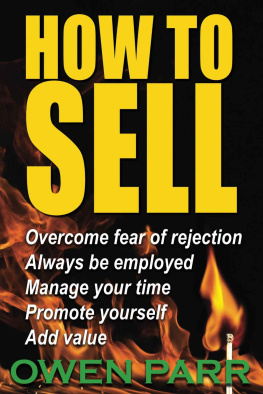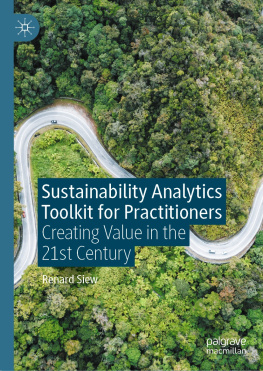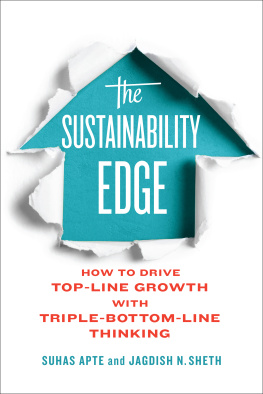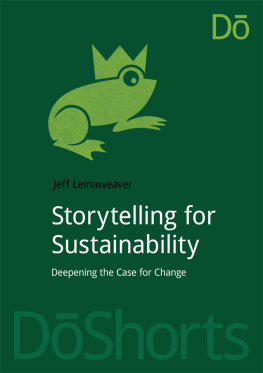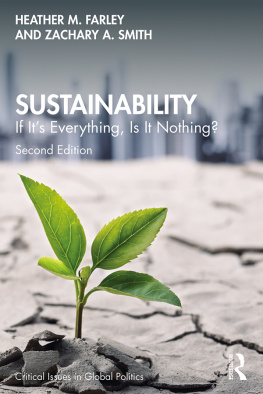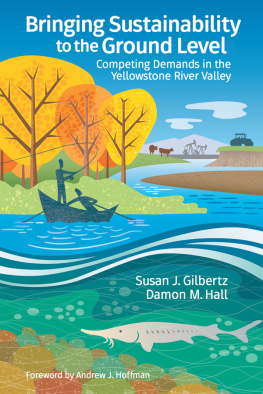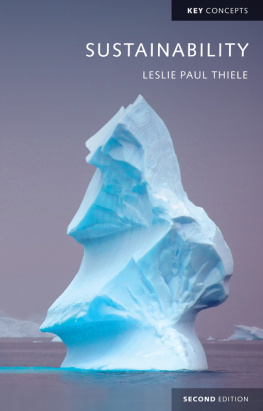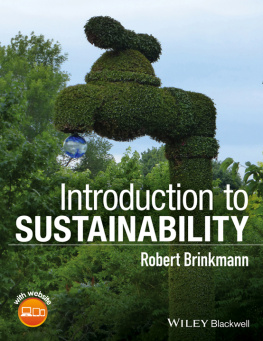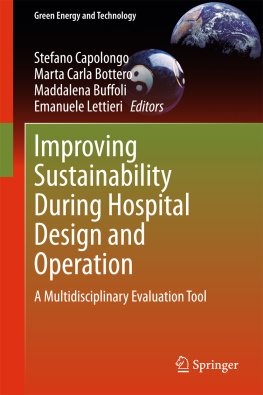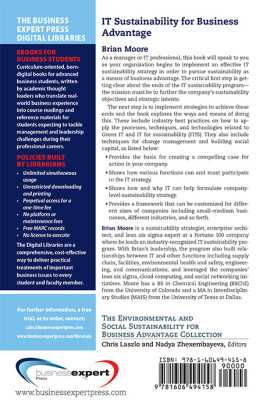Parr - Hijacking Sustainability
Here you can read online Parr - Hijacking Sustainability full text of the book (entire story) in english for free. Download pdf and epub, get meaning, cover and reviews about this ebook. City: Cambridge;Mass, year: 2012;2009, publisher: MIT Press, genre: Politics. Description of the work, (preface) as well as reviews are available. Best literature library LitArk.com created for fans of good reading and offers a wide selection of genres:
Romance novel
Science fiction
Adventure
Detective
Science
History
Home and family
Prose
Art
Politics
Computer
Non-fiction
Religion
Business
Children
Humor
Choose a favorite category and find really read worthwhile books. Enjoy immersion in the world of imagination, feel the emotions of the characters or learn something new for yourself, make an fascinating discovery.
Hijacking Sustainability: summary, description and annotation
We offer to read an annotation, description, summary or preface (depends on what the author of the book "Hijacking Sustainability" wrote himself). If you haven't found the necessary information about the book — write in the comments, we will try to find it.
How the sustainability movement has been co-opted: from ecobranding by Wal-Mart to the greening of the American military.
Parr: author's other books
Who wrote Hijacking Sustainability? Find out the surname, the name of the author of the book and a list of all author's works by series.
Hijacking Sustainability — read online for free the complete book (whole text) full work
Below is the text of the book, divided by pages. System saving the place of the last page read, allows you to conveniently read the book "Hijacking Sustainability" online for free, without having to search again every time where you left off. Put a bookmark, and you can go to the page where you finished reading at any time.
Font size:
Interval:
Bookmark:
Hijacking Sustainability
Hijacking Sustainability
Adrian Parr
The MIT Press
Cambridge, Massachusetts
London, England
2009 Massachusetts Institute of Technology
All rights reserved. No part of this book may be reproduced in any form by any electronic or mechanical means (including photocopying, recording, or information storage and retrieval) without permission in writing from the publisher.
MIT Press books may be purchased at special quantity discounts for business or sales promotional use. For information, please e-mail or write to Special Sales Department, The MIT Press, 55 Hayward Street, Cambridge, MA 02142.
This book was set in Stone Sans and Stone Serif by the MIT Press. Printed and bound in the United States of America.
Printed on recycled paper.
Library of Congress Cataloging-in-Publication Data
Parr, Adrian.
Hijacking sustainability / Adrian Parr.
p. cm.
Includes bibliographical references and index.
ISBN 978-0-262-01306-2 (hbk. : alk. paper)
1. Sustainable developmentSocial aspects. 2. EnvironmentalismSocial aspects. 3. Social change. I. Title.
HC79.E5P353 2009
338.9'27dc22
2008029420
10 9 8 7 6 5 4 3 2 1
To Lucien and Shoshana
Acknowledgments
In writing this book many people have generously and kindly given up their time to read over draft chapters and provide comments. I would particularly like to thank Ronald Bogue, Ian Buchanan, Felicity Colman, Mike Parr, Paul Patton, and Kenneth Surin. I have been lucky to have their feedback, especially considering they are the people whose own work has had a profound impact on me over the years. Versions of chapters 1 and 7 were published as part of the Seeking the City 96th ACSA Annual Meeting Conference Proceedings. In addition, I am most grateful for the graduates in the School of Architecture and Interior Design program at the University of Cincinnati who provided me with intellectual stimulation on a weekly basis. Their questions and lively discussions helped shape the final manuscript. Finally, I need to thank Michael Zaretsky, a talented architect committed to the principles of sustainable design, for providing me with endless resources, expert suggestions, detailed discussion, steady editing, unwavering support, and inspiration. I owe the completion of this book to him.
Acronyms
AMA American Marketing Association
BAN Basel Action Network
BFA Browning Ferris Industries
CFC Chlorofluorocarbon
DoD Department of Defense
EMA Environmental Media Association
ENR Environment and National Resources
EPA Environmental Protection Agency
FHA Federal Housing Administration
FSC Forest Stewardship Council
ICC Inuit Circumpolar Council
IDP Internally Displaced Persons
IPCC Intergovernmental Panel on Climate Change
IUCN International Union for the Conservation of Nature and Natural Resources
LEED Leadership in Energy and Environmental Design
MDG United Nations Millennium Development Goals
NGO Nongovernmental Organization
NRDC National Resource Defense Council
OEOB Old Executive Office Building
OLPC One Laptop Per Child
OSHA Occupational Safety and Health Administration
SEI Strategic Environment Initiative
SIPRI Stockholm International Peace Research Institute
SRI Socially and Environmentally Responsible Investment
SUSG Sustainable Use Specialist Group
UNHCR United Nations High Commission for Refugees
VOC Volatile Organic Compounds
WCED World Commission on Environment and Development
WMI Waste Management Inc.
Introduction
Sustainability. Gone are the days when the word conjured up images of unapologetic veganism, dreadlocks, and mud-brick homes. From ecohippie to ecohip, sustainability is the new buzzword on the lips of many Americans. The corporate sector is going green, Hollywood is taking up the cause with a bang, cities are being ranked according to how sustainable they are, and popular media are increasingly shifting their attention onto the problem of how the United States can change color. Why have these disparate lines of cultural production begun to convert to the green cause? Some might say natural disasters such as Hurricane Katrina, which ravaged New Orleans on August 29, 2005, have pushed the issue of global climate change into the frontal lobe of the popular imaginary, engaging a deepened sense of environmental responsibility where previously there had been none (or very little). Others salivate at the prospect of new markets and growing profits, rubbing their hands together in anticipation of the loud cha-ching cha-ching that their new investments in green technologies ring forth.
So, amidst all the heated fervor what exactly does sustainability refer to? The most commonly upheld definition comes from Our Common Future, the 1987 report on the state of global natural resources and the human environment compiled by the World Commission on Environment and Development (WCED).
With the primary objective of inaugurating a new era of economic growth that demands a return to multilateralism, the Brundtland Report insists that people can build a future that is more prosperous, more just, and more secure. Emphasis is given to a new international economic structure that fosters long-term cooperation, one that assigns an important developmental role to multinational companies and multilateral financial institutions especially in respect to initiating sustainable development initiatives in developing countries. Yet how do we reconcile the great divide that emerges when international organizations, for all their supposedly good intentions, bulldozer local specificity in the name of international aid and large-scale intervention?
The macro perspective of internationally coordinated sustainable- development initiatives can be held in stark contrast to grassroots initiatives operating at the local level (what are commonly referred to as social and environmental justice groups, which use a bottom-up or microeconomic approach). Starting out with the disparities between groups with access to environmental goodssuch as unpolluted and sanitary living conditionsand those who carry too many environmental burdenssuch as communities in proximity to landfills and industrial wastethe thousands of local organizations that constitute the sustainability movement seek to eliminate the power structures underpinning the disproportionate burden of social and environmental ills underprivileged groups carry. Like the appeal to the rights of the human family to a healthy and productive environment made in the Brundtland Report, the sustainability movement also takes a rights-based approach. That is, the movement seeks justice for the underprivileged, including the right of the environment not to be destroyed. However, unlike recommendations made in the Brundtland Report, the solution proffered is not a multilateral global approach to the problem of sustainable development; instead these groups are often more interested in initiating and supporting local programs.
The irony, however, is that grassroots organizations still need to squeeze local specificity into a manageable and general rubric before the needs of disenfranchised groups can be represented in the political arena. In reality, power structures are challenged and critiqued only after representation is reintroduced into the political vocabulary, and its effectiveness depends upon the collaboration of large institutions (governmental and/or international) as much as it does the efforts and commitments of local actors. For these reasons, problems of representation and agency are what frame my discussion of sustainability culture throughout this book. I propose that the politics of sustainability culture arises in the way culture engages with problems of environmental exploitation and social injustices with a view to supporting and activating a sense of agency for disenfranchised individuals and groups.
Next pageFont size:
Interval:
Bookmark:
Similar books «Hijacking Sustainability»
Look at similar books to Hijacking Sustainability. We have selected literature similar in name and meaning in the hope of providing readers with more options to find new, interesting, not yet read works.
Discussion, reviews of the book Hijacking Sustainability and just readers' own opinions. Leave your comments, write what you think about the work, its meaning or the main characters. Specify what exactly you liked and what you didn't like, and why you think so.



